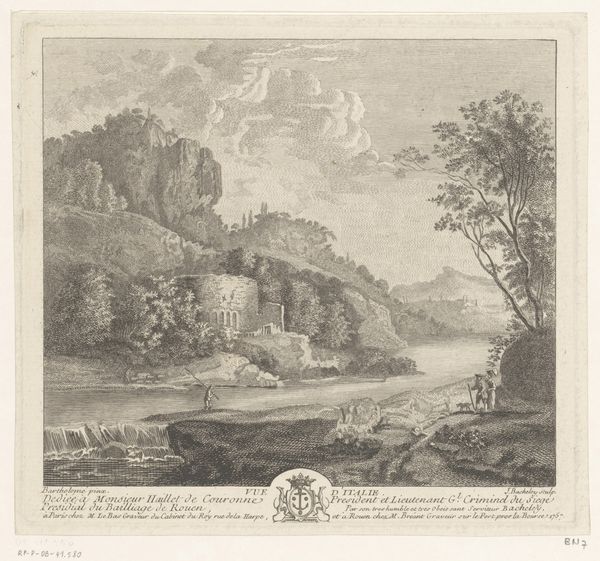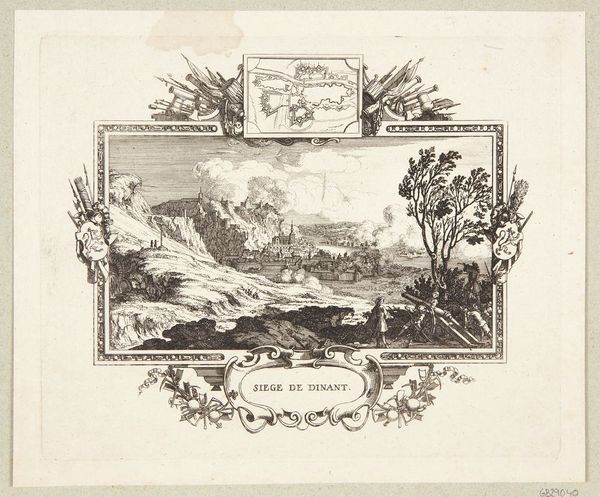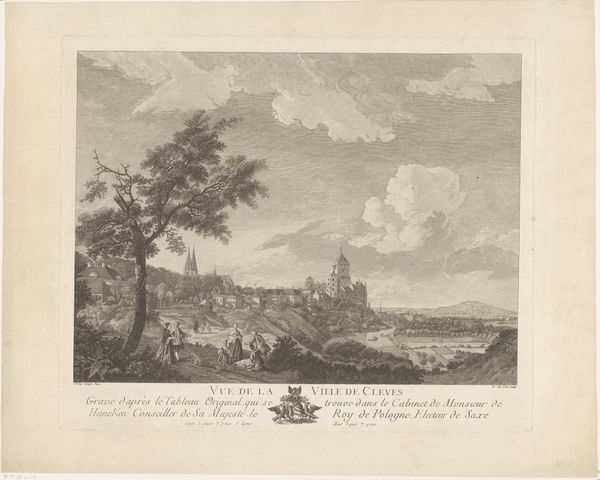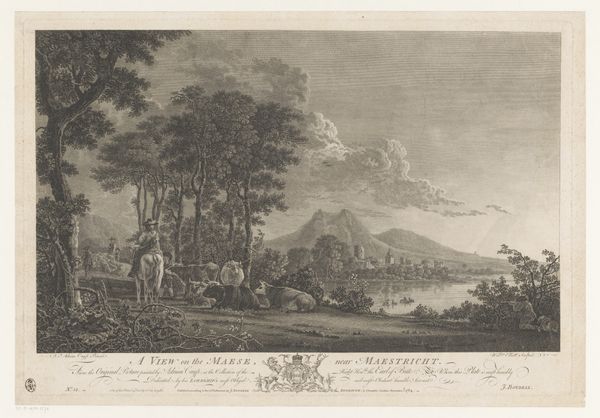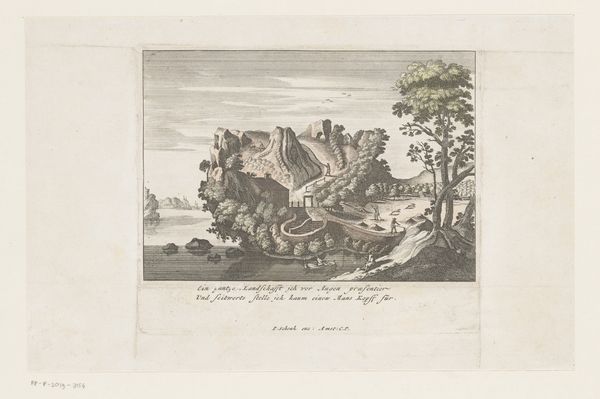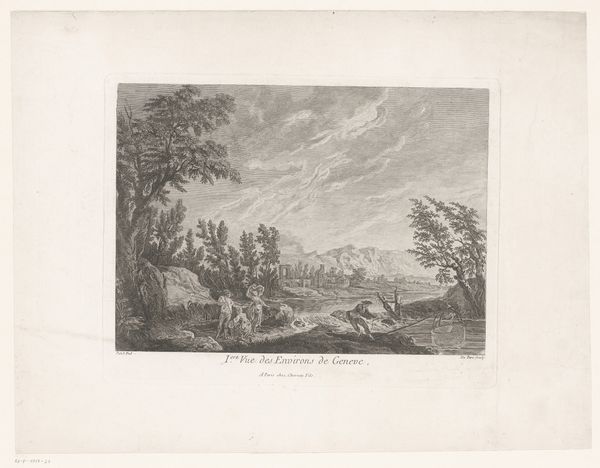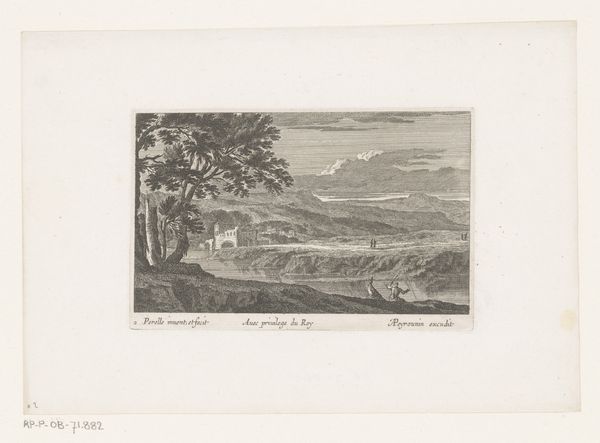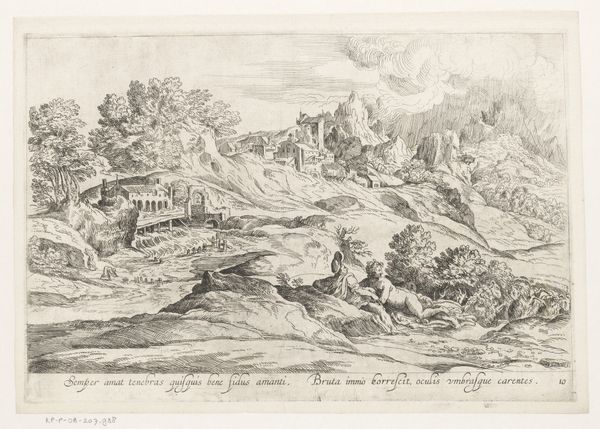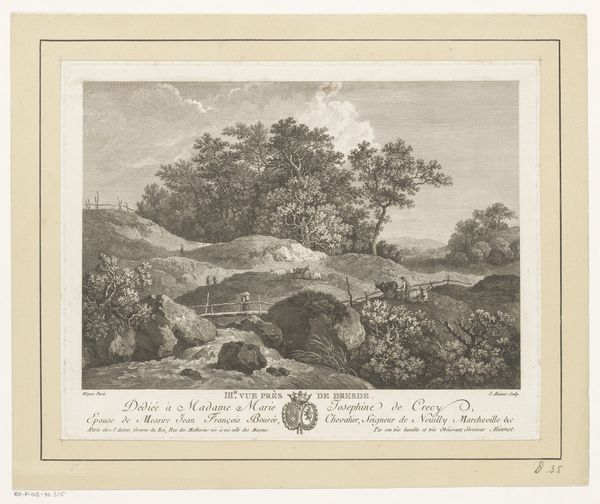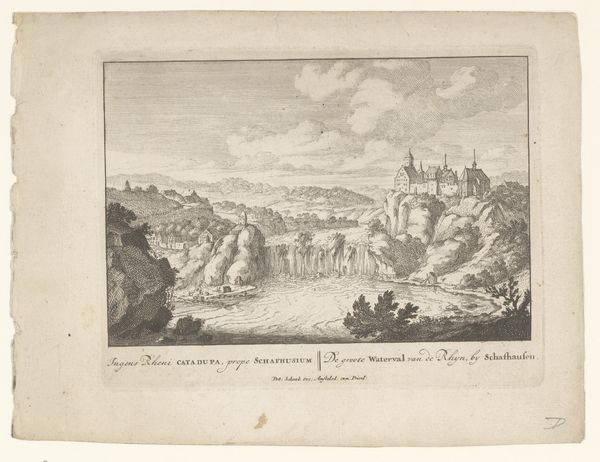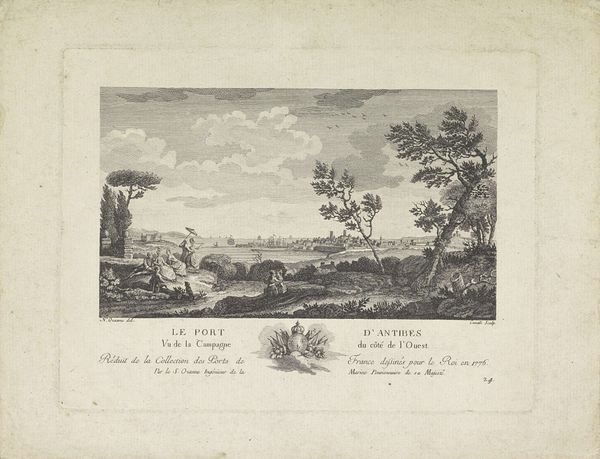
print, engraving
# print
#
landscape
#
line
#
engraving
Dimensions: height 153 mm, width 196 mm, height 57 mm, width 196 mm
Copyright: Rijks Museum: Open Domain
Curator: Before us, we have Carl Friedrich Holtzmann's "Heuvellandschap met een rivier," a landscape piece rendered in 1787 through the meticulous craft of engraving. Editor: The initial effect is one of placid simplicity, almost pastoral, wouldn’t you say? The monochromatic treatment lends a certain softness, but look how those lines delineate depth and shadow. Curator: Exactly! The strategic application of line is paramount. Consider the rigorous control and how the artist manipulates thin, decisive marks to define form. It’s not merely representational. It’s a structured composition balancing light and shade. The line weight dictates volume. Editor: I'm compelled by the process of its creation, all those incredibly fine lines, meticulously carved. Think of the labor, the material constraints, the sheer physicality required to transfer this scene to the copper plate. Curator: Certainly. The artist exercises such discipline with the medium. Note the foreground elements leading the eye—the groupings of forms establishing spatial relationships within the landscape. And consider, is the overt subject of landscape more complex here? Are we truly considering a picturesque landscape or simply formal relations and abstract geometries? Editor: It makes you consider the materials available to Holtzmann at the time. A world steeped in a much different aesthetic of value that emphasizes handcrafted beauty versus mass production in the contemporary world. It's far more tactile than a quick digital print; it requires a maker present throughout the entire journey, start to finish. The landscape serves almost as a support for something very intentional with a clear perspective about its value as an aesthetic and physical object. Curator: The deliberate tonal arrangements create depth; one may say, perhaps, we aren’t necessarily beholden to the depiction, rather how we are positioned to perceive pictorial structures! Editor: Agreed! Looking closer at the inscription and dedications, you know that this was a commissioned piece made to impress someone influential. Seeing the evidence of how this connected artist and patron, transforming materials to create value, becomes fascinating. Curator: Quite right. By reducing nature to these systematic relations, Holtzmann unlocks access to an aesthetic experience exceeding the limits of topography. Editor: Indeed! To fully experience the art object is a combination of technical analysis but also of recognizing its embedded social values.
Comments
No comments
Be the first to comment and join the conversation on the ultimate creative platform.

